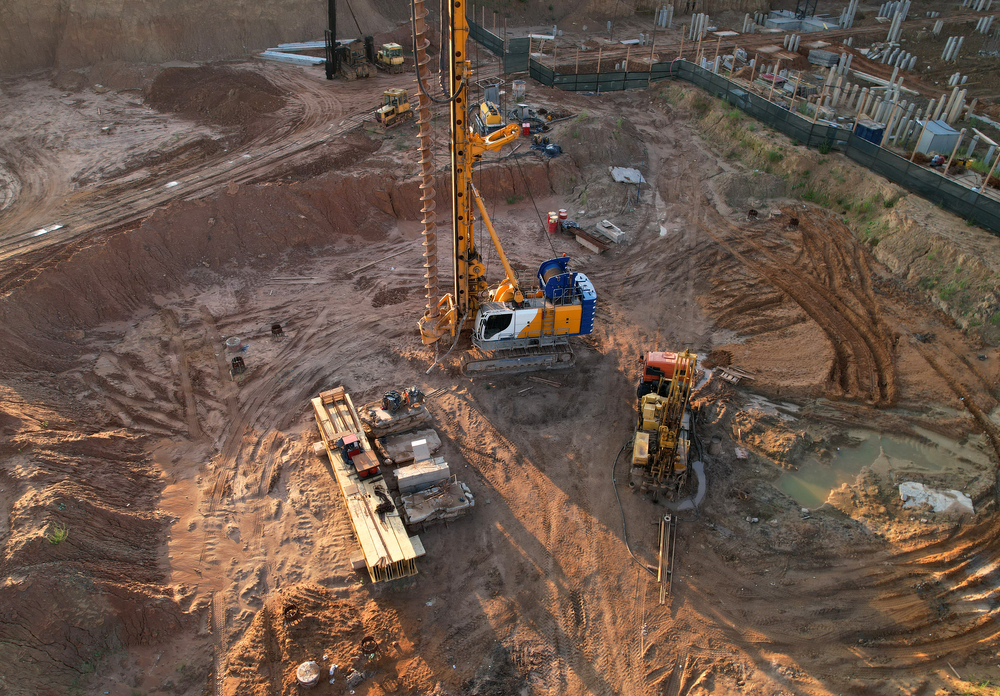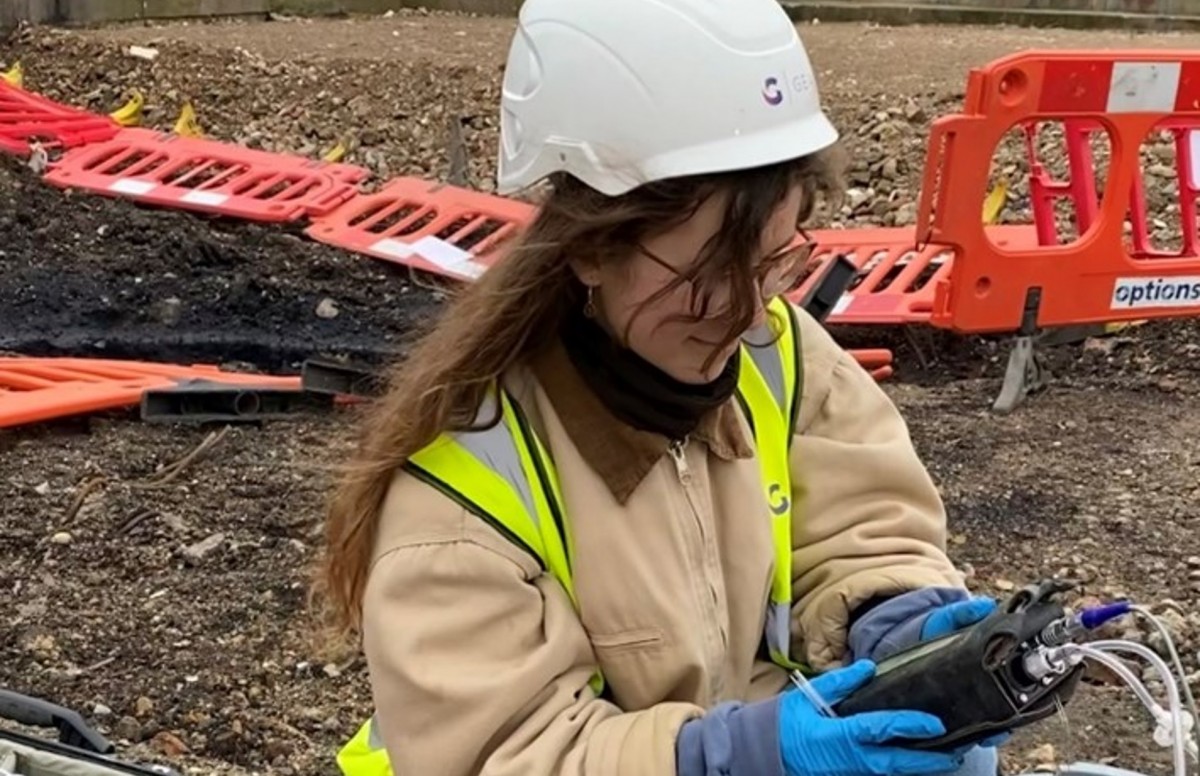5 Easy Facts About Geotheta Described
Table of ContentsTop Guidelines Of GeothetaExamine This Report about GeothetaSome Ideas on Geotheta You Should KnowGeotheta Things To Know Before You BuyGeotheta Fundamentals Explained

They carry out site investigations, collect examples, execute laboratory tests, and assess information to review the suitability of the ground for building and construction projects - Geo Tech Engineering. Based upon their searchings for, geotechnical designers give suggestions for structure design, incline stability, keeping structures, and reduction of geotechnical risks. They collaborate with various other experts, such as architects, architectural engineers, and building and construction groups, to make sure that geotechnical considerations are integrated into the general project style and application
By analyzing the actions and residential or commercial properties of dirt and rock, they can recognize potential geotechnical risks such as landslides, dirt settlement, or slope instability. Their expertise helps stop failures or mishaps that could endanger lives and residential property. Below are some detailed obligations and responsibilities of a geotechnical engineer: Site Examination: Geotechnical engineers conduct website examinations to collect information on subsurface conditions.
They analyze the information to understand the properties and actions of the dirt and rock, including their toughness, permeability, compaction characteristics, and groundwater problems. Geotechnical Evaluation and Style: Geotechnical designers analyze the data accumulated throughout website examinations to examine the stability and viability of the website for building and construction tasks. They do geotechnical estimations and modeling to assess aspects such as birthing capability, settlement, incline security, side planet stress, and groundwater circulation.
Geotheta Can Be Fun For Everyone
Foundation Layout: Geotechnical designers play a crucial function in developing structures that can safely sustain the desired structure. They evaluate the soil problems and load demands to figure out the suitable structure kind, such as superficial foundations (e.g., footings), deep foundations (e.g (https://hearthis.at/geotheta/set/geotheta/)., stacks), or specialized techniques like dirt enhancement. They think about variables such as settlement limitations, bearing capacity, and soil-structure interaction to create ideal structure styles
They assess building strategies, screen website tasks, and conduct field inspections to confirm that the design suggestions are followed. If unpredicted geotechnical concerns arise, they assess the circumstance and offer recommendations for remediation or modifications to the design. Danger Analysis and Mitigation: Geotechnical designers evaluate geotechnical risks and dangers linked with the task website, such as landslides, liquefaction, or dirt erosion.

Cooperation and Interaction: Geotechnical designers function very closely with various other specialists entailed in a job, such as engineers, structural engineers, and building and construction teams. Reliable communication and collaboration are necessary to integrate geotechnical considerations into the overall task layout and construction procedure. Geotechnical engineers supply technical knowledge, solution inquiries, and ensure that geotechnical demands are fulfilled.
Geotheta for Beginners
Right here are some sorts of geotechnical engineers: Structure Designer: Structure designers focus on making and evaluating structures for frameworks. They analyze the dirt problems, lots requirements, and website features to identify one of the most proper web link foundation type and layout, such as shallow foundations, deep structures, or specialized methods like pile structures.
They evaluate the factors affecting slope security, such as dirt residential properties, groundwater conditions, and incline geometry, and establish techniques to stop slope failures and reduce threats. Earthquake Engineer: Quake engineers concentrate on assessing and creating frameworks to withstand seismic pressures. They assess the seismic hazard of a website, review dirt liquefaction potential, and establish seismic layout standards to guarantee the safety and security and resilience of frameworks throughout earthquakes.
They carry out field testing, collect examples, and evaluate the gathered information to characterize the soil residential properties, geologic formations, and groundwater conditions at a website. Geotechnical Instrumentation Engineer: Geotechnical instrumentation engineers focus on surveillance and gauging the behavior of soil, rock, and structures. They set up and maintain instrumentation systems that monitor factors such as dirt negotiation, groundwater levels, incline activities, and architectural variations to evaluate efficiency and offer early cautions of prospective issues.
Geotheta Fundamentals Explained
They perform examinations such as triaxial examinations, consolidation tests, straight shear tests, and permeability tests to gather data for geotechnical evaluation and style. Geosynthetics Engineer: Geosynthetics designers specialize in the layout and application of geosynthetic materials, such as geotextiles, geogrids, and geomembranes. They make use of these products to boost dirt security, strengthen inclines, supply water drainage remedies, and control disintegration.
They tend to be investigative people, which suggests they're intellectual, reflective, and analytical. They are curious, systematic, logical, logical, and sensible. Some of them are additionally social, implying they're kind, charitable, cooperative, client, caring, helpful, empathetic, skillful, and pleasant - Engineer of Record.
In the workplace environment, geotechnical engineers utilize specialized software application tools to execute calculations, produce layouts, and evaluate data. They prepare records, review job requirements, interact with clients and team members, and coordinate job tasks. The workplace setup gives a favorable environment for study, evaluation, and partnership with other specialists involved in the project.
The Best Guide To Geotheta
They frequently see project sites to conduct website examinations, examine geotechnical conditions, and gather data for evaluation. These gos to involve taking a trip to different locations, sometimes in remote or tough terrains. Geotechnical engineers may carry out dirt tasting, conduct tests, and monitor building and construction activities to make certain that the geotechnical elements of the project are being executed properly.
Geotechnical designers also function in specialized geotechnical research laboratories. Geotechnical research laboratory designers function extensively in these atmospheres, handling screening tools, running instruments, and recording information.